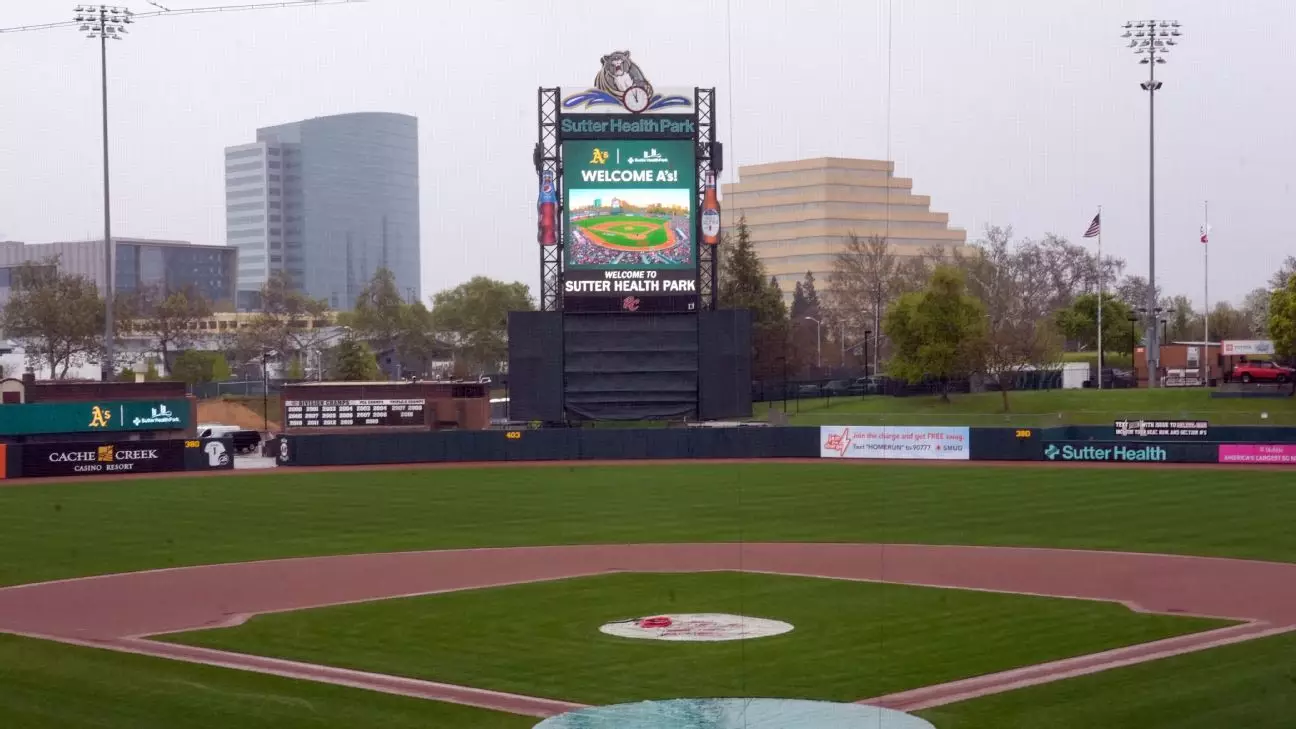In an unusual yet exciting arrangement, the Sutter Health Park will soon be the battleground for both Major League Baseball (MLB) and Minor League ball as the San Francisco Giants’ Triple-A affiliate, the Sacramento River Cats, prepares to share its turf with the Oakland Athletics. Major League Baseball’s field consultant, Murray Cook, along with an expanded on-site grounds crew, is spearheading efforts to ensure that this shared venue can handle the stress of two teams playing on the same field. With both teams relying heavily on maintaining top-notch playing conditions, the collaboration reflects a commitment to innovation in sports management and turf care.
The emergence of this dual-team setup introduces a unique set of challenges that traditional field management has not typically faced. According to Cook, preparations are already being implemented to control wear and tear that is expected as the season progresses. High-traffic areas such as the mound, home plate, and the infield are likely to face significant degradation due to the increased foot traffic. This reality necessitates meticulous planning, including the use of nearby backup fields for swift sod replacement as needed, showcasing a level of foresight that is crucial for any facility that aims to host teams at different levels.
Emphasizing Natural Turf: A Step Towards Player Preference
One of the key decisions made ahead of the season is the choice of natural grass over artificial turf—a move that speaks to player preferences for softer, more forgiving surfaces. Cook noted that the choice was not made lightly, given that the weather in Sacramento poses its own set of challenges. Players have long expressed their desire to perform on natural grass, which they argue not only promotes a better game but also reduces the risk of injury. While synthetic alternatives have their advantages, the transition back to natural turf is indicative of a broader understanding of player comfort and safety in sports.
However, Cook is realistic about the difficulties inherent to managing a natural grass field, especially one being used by two teams. While he acknowledges that maintaining a pristine playing surface is achievable, he does not shy away from the fact that challenges will inevitably arise, especially as the spring season progresses. While the choice of turf may evoke nostalgia for some, it invites modern challenges that reflect the ongoing evolution of outdoor sports venues.
Tech Meets Tradition: Monitoring Field Health
In an era where technology reinvents every facet of our lives, sports turf management has not been left behind. Sutter Health Park will incorporate cutting-edge solutions such as drones and on-field sensors to monitor grass health alongside a state-of-the-art irrigation system that complements traditional watering methods. Advanced monitoring will allow the grounds crew to assess soil conditions daily and target specific areas that require immediate attention. This tech-driven approach encapsulates a fundamental shift where agriculture combines with athletics, leading to an increase in the performance quality of both the venue and the athletes themselves.
Additionally, the existing drainage system underneath the field provides both a cooling mechanism and an efficient means of water management, representing a significant advancement in turf care. No longer is field management simply about aesthetics; it reflects a commitment to creating conditions that enhance both play and player welfare. The innovation going into this project goes beyond just maintaining grass; it also involves pushing the boundaries on how we think about sports environments.
The Future of Shared Venues: A New Norm in Baseball
As the Oakland Athletics prepare for their three-year stint in Sacramento, the outcome of this ambitious experiment may set the stage for how other teams consider shared venues in the future. The creative use of resources and strategic planning suggests a promising model that could change how baseball operates, especially in cities wrestling with space constraints. By reimagining how teams can share a single space, particularly in a way that commands respect for quality and performance, this endeavor could resonate well beyond California.
Ultimately, maintaining a high-quality playing surface amid the logistical challenge of dual occupancy shows an eagerness to innovate and adapt. As teams venture deeper into this collaborative terrain, the Sutter Health Park may soon emerge as a pioneering model for future shared sports venues. The spotlight now shines not just on the players inside the diamond, but also on the visionaries working tirelessly to transform traditional football into something dynamic, adaptable, and above all, player-centric.

